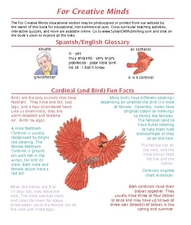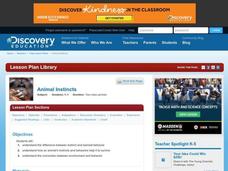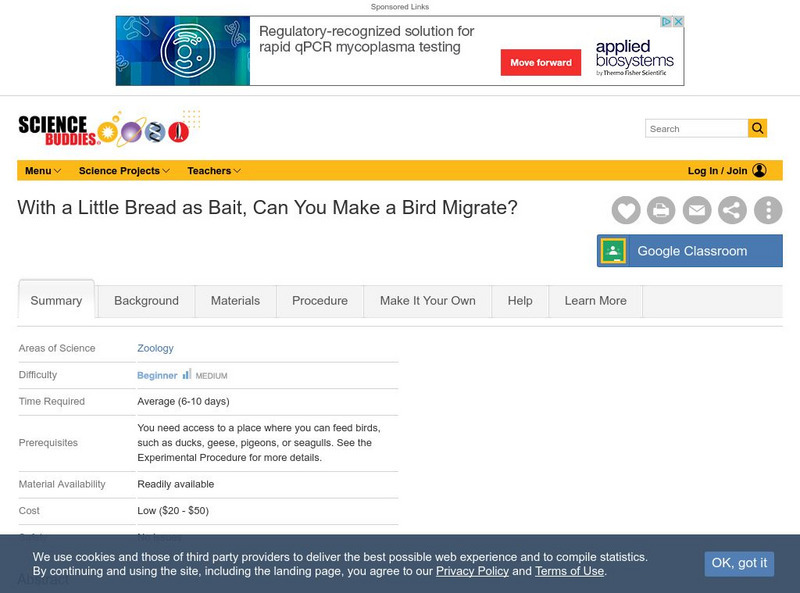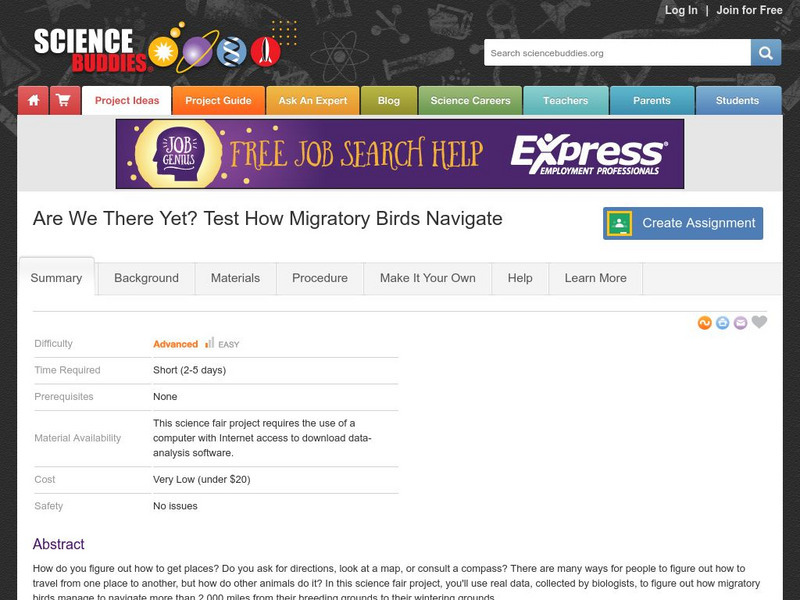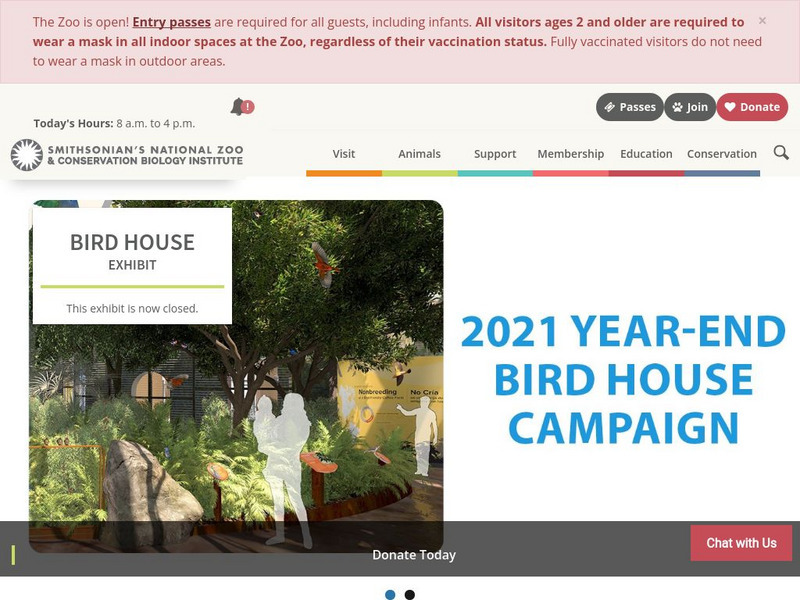Curated OER
How Animals Prepare for the Winter
Students study animals. In this hibernation lesson, students are read Stranger in the Woods and they discuss what various animals do in their habitat during the winter. They work as a class to create their own hibernation environment...
Curated OER
Teeter Totter
Students explore the two types of spotted sandpipers. They create a puppet show using the spotted sandpiper from Puerto Rico and the spotted sandpiper from Alaska. Students research the habitats of the two sandpipers.
Curated OER
Wildlife Habitat
Students explain what a habitat is and describe its four elements. They see how an area's habitat suitability varies with different species of wildlife. They name factors that affect habitat suitability.
Curated OER
Garden Guard
Students design and create scarecrows. They write descriptively about the scarecrow for a classroom scarecrow show.
Curated OER
Geese and Sandhill Cranes of Nebraska
Young scholars gather information on the geese and cranes found in Nebraska. Students explore ways they can help save their habitats. Also, young scholars use additional general information they connect artwork to their research topic.
Curated OER
Cardinals
In this cardinals worksheet, learners explore facts about cardinals and practice their number reasoning. Students read about cardinals and solve word problems involving cardinals.
Curated OER
Ocean Animals vs. Humans
Students use critical thinking skills to solve word problems using ratios that allow them to compare humans to ocean animals.
Curated OER
Winer Survival
Students study how animals need water, food, shelter, and space to survive. They also study what animals need to survive in the winter. They play the part of animals and winter "threats" in a game of tag to reinforce concepts.
Curated OER
Land Use
Students examine ecosystems that covered Illinois 200 years ago, investigate some living and non-living components of ecosystems, identify components of prairie system, create food webs, and observe human effects on environment. Lessons...
Curated OER
No magic borders
Students discuss what they have heard about pollution. They explore the purposes and limitations of political boundaries and borders and identify some of the causes and effects of pollution.
Curated OER
This Stuff Makes Me Sick
Students participate in a lab showing the effects of pesticides on Lumbriculus variegatus. Several extensions and variations are also included in this lesson including one which relates the experiment to how pesticides enter our drinking...
Curated OER
Great Salt Lake Introductory lesson
Fourth graders explore the Great Salt Lake. Using the internet, they identify web sites that contain information on the Great Salt Lake. After researching the website, 4th graders answer questions and list information they collected...
Curated OER
Wintry Warmers
In this season worksheet, students read facts about winter and find 20 homophones. Students also correct the errors in the sentences.
Curated OER
Water and Rice Agriculture
Second graders investigate the agriculture of rice by reading a study guide. In this food making lesson, 2nd graders read about the irrigation of rice fields used for harvesting. Students write three sentences about the rice irrigation...
Curated OER
Animal Instincts
Students compare animal adaptations to human behavior. In this science lesson, students discuss animal instincts vs. learned behavior. Options for student writing, drawing and research are incorporated into this lesson plan
Science Buddies
Science Buddies: With a Little Bread as Bait, Can You Make a Bird Migrate?
You might like to play in the autumn leaves and winter snow, but have you noticed that many birds don't like to stick around for the cold weather? And instead of the birds you're used to seeing in the warm months, your new feathered...
Canadian Wildlife Federation
Hinterland Who's Who: Bird Banding in Canada
Learn about bird banding in Canada. Since 1923, Canada has had a bird banding program which enables it to gather data to help manage and conserve the country?s birds. Find out how birds are banded and who is responsible for this. Also,...
Science Buddies
Science Buddies: Are We There Yet? Test How Migratory Birds Navigate
How do you figure out how to get places? Do you ask for directions, look at a map, or consult a compass? There are many ways for people to figure out how to travel from one place to another, but how do other animals do it? In this...
Enchanted Learning
Enchanted Learning: Birds
This site from Enchanted Learning can answer your questions about birds. What type of scientist studies birds? What is the fastest running bird? Which bird lays the largest birds' eggs? Come and find out the answer to these questions and...
Smithsonian Institution
Smithsonian National Zoo: Birds
The Smithsonian National Zoological Park provides a detailed look at birds. Content includes a focus on the Zoo's bird house exhibit, as well as bird houses, flight cages, bird facts, bird information for kids, an FAQ section, a photo...
PBS
Pbs: Champion Birds
The PBS video series "The Life of Birds" is accompanied with this site. There are articles about several aspects of birds and their behavior. This one chronicles the highest, fastest, and most extreme birds. There are lots of examples.
Annenberg Foundation
Annenberg Learner: Journey North: A Global Study of Wildlife Migration and Seasonal Change
Join teachers and students all over the country in observing the migratory patterns of birds and butterflies and the growth changes of plants as the climate changes. "Journey North" offers a wealth of resources to use as you investigate...
National Geographic
National Geographic: Oil and Bird Populations
After learning about the diversity of wildlife in the Gulf of Mexico, students focus on birds and their patterns of behavior. They then how an oil spill might affect migrating birds, and possible ways to help them in the event of an oil...







